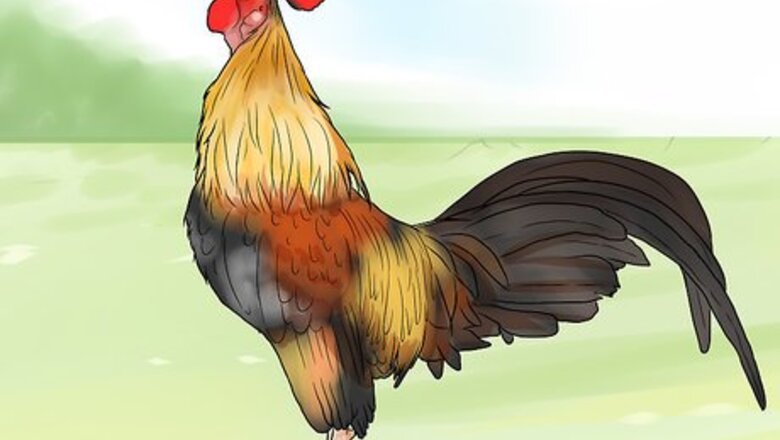
views
X
Research source
Adjusting Your Rooster’s Lifestyle
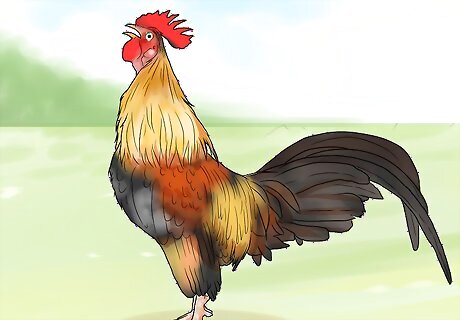
Learn your rooster’s crowing habits. The rooster is responsible for protecting his flock. He crows to inform the flock of environmental changes and potential hazards. Observe your rooster’s crowing habits and note specific stimuli that causes him to crow.
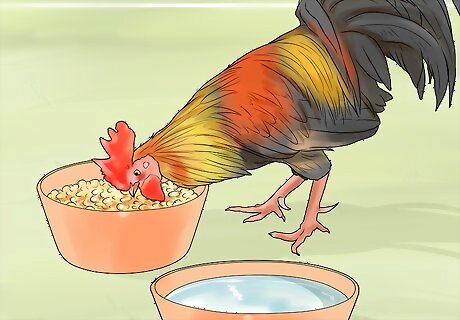
Meet your rooster’s needs. In addition to alerting his flock to potential dangers, a rooster may crow to inform you that he is out of feed and or water. Meeting his most basic needs on a consistent and regular basis will decrease his need to crow. To decrease his nighttime crowing, make sure to stock his coop with water and food before you head to bed.
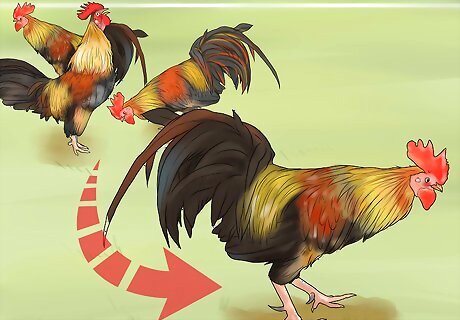
Decrease the size of your flock. Roosters crow to assert their dominance over other roosters and to communicate with their flock. To avoid crowing matches between roosters, only keep one in the roost. Decreasing the size of your flock will reduce your rooster’s need to crow as well.
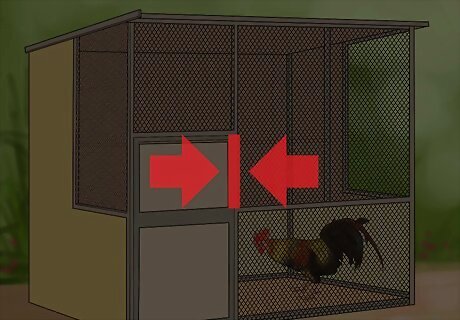
Limit your rooster’s exposure to nighttime stimuli. Crowing is most disruptive to you and your neighbors throughout the night. When a rooster is allowed to roam at night or he lives in a coop with an outdoor run, he is exposed to stimuli that will likely cause him to crow. Keeping your rooster inside a closed, darkened coop throughout the night will limit his exposure to predators and light that may cause him to crow.
Converting a Raised Dog Crate into a Blackout Box

Gather the required materials and find a suitable location. A blackout box provides your rooster with a dark, non-stimulating sleeping environment. You can often locate the materials required to build a blackout box around your home or purchase them from a local pet supply store. If you intend to keep the blackout box outside, find a shady location. If you prefer to house your rooster’s indoors, place the blackout box in your garage or outbuilding.
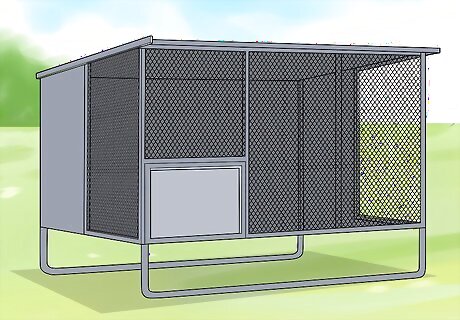
Assemble and prepare the raised dog crate. A raised dog crate serves as an ideal blackout box because his raised bed provides ventilation and you can easily cover the kennels’ holes. Assemble the crate in the location you selected—follow the instructions provided by the manufacturer. Remove any dog bedding and cover the floor of the crate with a layer of hay.
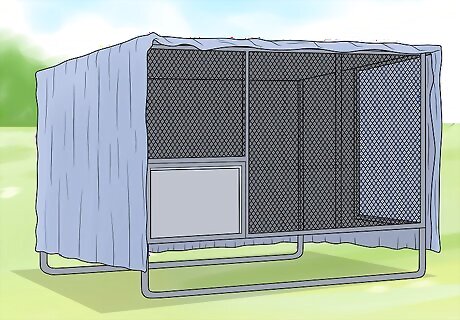
Cover the crate’s holes. The walls of your dog crate may be solid, slotted, or wire. To effectively block out light, drape the top, back, and side walls with blackout drapes. Purchase or cut a piece of plywood that is the same dimensions as the front wall. Lay the plywood against the front of the crate.
Making or Purchasing a Rooster Collar
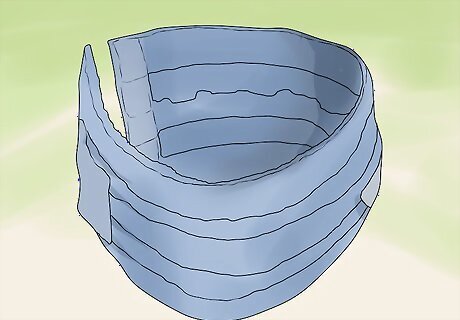
Purchase or make a rooster collar. A Rooster collar limits the airflow to a rooster’s voice box, which reduces the volume of his crows. You can purchase a rooster collar or make your own. To make your own collar you will need double-sided Velcro. The velcro should be 2 inches wide. Cut a 6 to 8 inch piece of velcro. Adhere the back sides of the velcro to each other. Effectively silence early morning crowing. "My rooster's predawn crowing was really getting on my neighbors' nerves. After reading this guide, I tried limiting my roo's nighttime exposure to things that triggered his crowing. I also fitted him with a simple homemade collar. I'm happy to say these methods have been really effective for silencing that early morning racket. Now everyone can sleep peacefully!" - Rice T. Use a collar. "I had a young rooster who crowed loudly and persistently for hours on end. We tried everything to curb his disruptive habit short of rehoming him. As a last resort, I attempted the rooster collar method described here. Although it took some adjustment, the collar has significantly reduced how long and loud he crows. It has made a world of difference for us and our neighbors!" - Samuel M. Meet rooster's needs to reduce crowing. "At first, I assumed my rooster was just ill-mannered and loud. But after reading this, I realized perhaps his frequent, boisterous crowing was due to some unmet needs. I made sure to keep his coop stocked with food and water. I also reduced the size of his flock. Meeting these basic care requirements has led to notably less crowing. Simple adjustments made a big difference for his contentment and my sanity!" - Rachel M. Explore humane anti-crowing methods. "My family cared deeply for our backyard rooster, but his incessant crowing all hours of day and night was fraying our last nerves. As much as we adored him, we worried we'd have to rehome our feathery friend. Before taking that step, I was glad to find this guide's humane ideas like lifestyle changes and collars to manage the noise. We're so grateful we explored alternatives first before having to say goodbye!" - Ann W. We want to hear from you! Advice from our readers makes our articles better. If you have a story you’d like to share, tell us here.
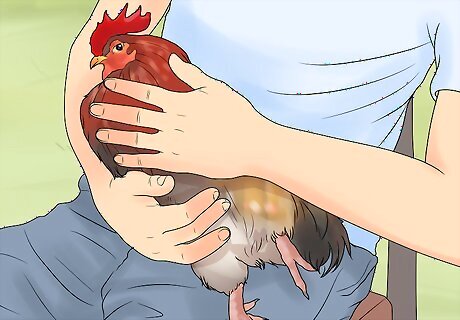
Secure the rooster in your lap with both hands. Place the rooster in your lap—his head should face away from you. Circle your thumb and index finger of your non-dominant hand around his neck. Lift his feathers by moving your hands up his neck.

Place the collar on the back of the rooster’s neck. Use your dominant hand to grab the collar. Lay one end of the collar on the back of the rooster’s neck. Use the thumb encircling the rooster’s neck to hold the collar in place. Position the collar low on the rooster’s neck.
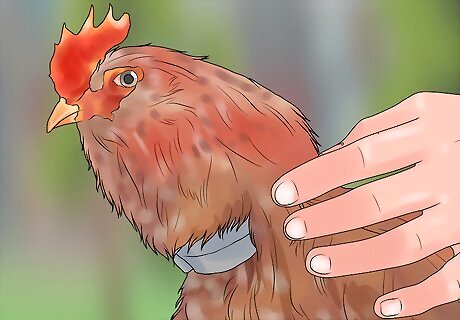
Wrap the collar around the rooster’s neck and secure it. As you continue to hold the collar with your thumb, use your dominant hand to wrap the collar around the rooster’s neck. Overlap the collar and secure the velcro. Carefully align the lengths of the collar.
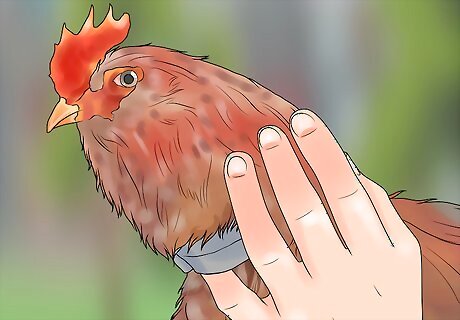
Make sure the collar is not too tight. It is essential that you assess the fit of your rooster’s collar. Insert your pinky finger between the collar and the rooster’s neck. Your pinky finger should slide under the collar’s top and bottom edges. Listen to the rooster’s breathing. If he is struggling to get air, loosen the collar. Continue to check on him often.
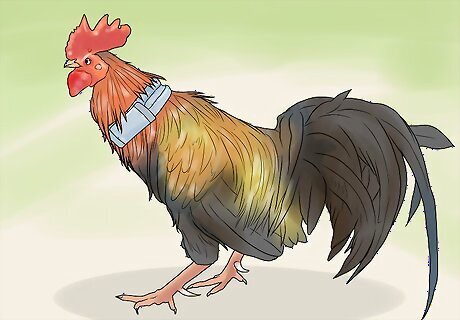
Allow your rooster to acclimate to the collar. When you first put on the collar, your rooster may jump backwards and try to remove the collar. Work with your rooster to help him get used to wearing the collar. For the first day, keep the collar loose. As you gradually tighten the collar, reward your rooster with treats.
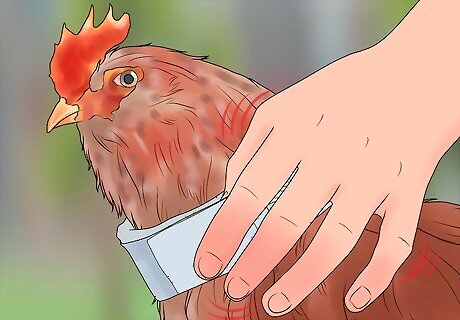
Adjust the collar as needed. It may be necessary to adjust the fit of the collar. Check the fit of the collar from time to time. Pay special attention to your young rooster—adjust the collar as your rooster grows.


















Comments
0 comment